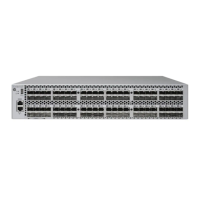Example
This example is a listing created from the RESTORE command:
1> RESTORE $GCC, *.*.*, LISTALL, DETAIL
The listing shows some of the BACKUP options used to create the tape. This information helps to
verify the contents of the tape.
File Mode RESTORE Program - T9074D46 (07SEP98) System: \BOSTON
Copyright Tandem Computers Incorporated 1981-1998
Drive: $GCC Operating System: G06 Tape Version: 3
Backup options: NO AUDITED, BLOCKSIZE 8, NO IGNORE, NO OPEN, NO PARTONLY
Restore time: 19Dec1998 10:51 Backup time: 30Feb1998 10:42 Page: 1 Tape: 1
$AEP.LIT.MDVL
ENSCRIBE
TYPE U
CODE 101
EXT ( 4 PAGES, 4 PAGES )
MAXEXTENTS 16
OWNER 1,1
SECURITY (RWEP): CUCU
MODIF: 2Oct1997 9:57
CREATION DATE: 30 Aug 1997, 10:51
EOF 2056 ( 1.6% USED )
EXTENTS ALLOCATED: 1
$AEP.LIT.VCTRN
ENSCRIBE
TYPE E
CODE 0
EXT ( 1 PAGES, 1 PAGES )
MAXEXTENTS 16
REC 80
BLOCK 1024
OWNER 1,1
SECURITY (RWEP): CUCU
MODIF: 2Oct1997 9:57
CREATION DATE: 30 Aug 1997, 10:51
EOF 0 ( 0.0% USED )
EXTENTS ALLOCATED: 0
Summary Information
Files restored = 2 Files not restored = 0
LISTONLY
The LISTONLY option causes RESTORE to run without restoring any files. This option generates a
listing of the files that are specified in restore-files.
LISTONLY
Guidelines
• The only file-mode options that are meaningful with the LISTONLY option are DETAIL,
NOUNLOAD, and VERIFYTAPE.
• Before restoring files, use the LISTONLY option to see some of the BACKUP options specified
when creating the tape. The BACKUP options have a direct effect on how that tape is restored.
• You can use the LISTONLY option with the VOLUMEMODE option, but it provides only an
abbreviated listing, showing the disk that was backed up. Unlike the LISTONLY option for
RESTORE Options 137

